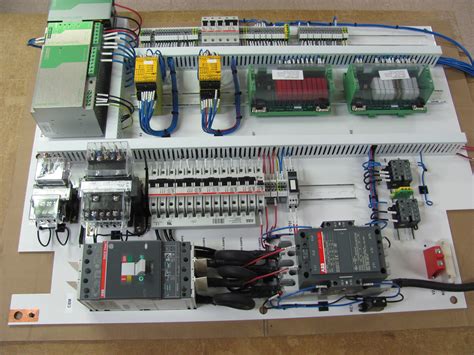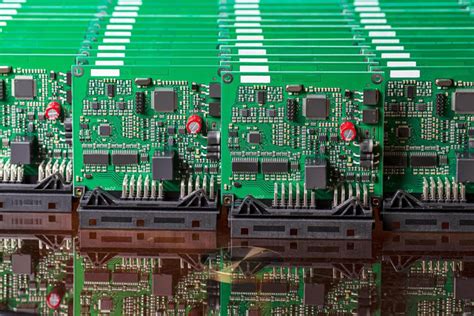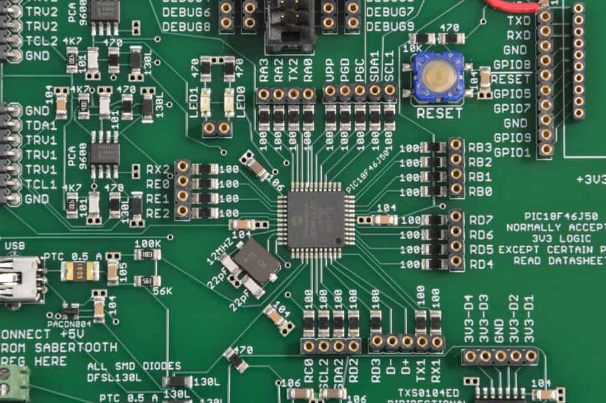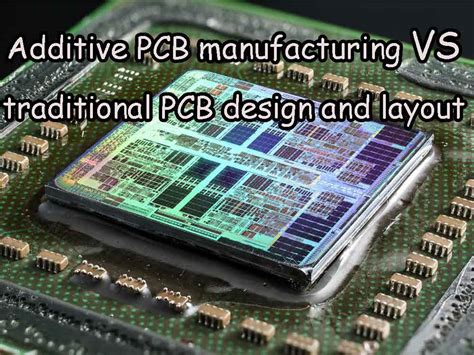Mastering Control Board Assembly: A Comprehensive Guide
Key Takeaways
When exploring pcb assembly, it’s vital to grasp the foundational elements that can significantly impact the overall quality and efficiency of the process. One of the primary aspects to understand is that the term pcba refers not only to the physical board itself but also encompasses all components assembled on this board. An effective pcb assembly process begins with selecting appropriate materials and tools. Ensuring you have a well-organized workspace can save time and reduce errors during assembly. Moreover, familiarizing yourself with the different techniques, including soldering and component placement, will enhance your ability to create high-quality assemblies.
Furthermore, addressing potential challenges head-on—such as component misalignment or soldering defects—can lead to smoother operations in future projects. By adopting best practices for quality control and staying informed about emerging trends in pcb assembly, you can refine your skills further. This ongoing commitment not only improves personal prowess but also helps in delivering superior results in broader applications across various electronic fields. Ultimately, mastering these essentials paves the way for greater efficiency and confidence in tackling any pcba related task.
Introduction to Control Board Assembly
The process of pcb assembly, commonly referred to as pcba, stands as a fundamental aspect of electronics manufacturing. This critical phase involves not just the attachment of components to a printed circuit board, but also the precise integration of various technological elements that ensure functionality and durability. Understanding the nuances of control board assembly is essential for both newcomers and seasoned professionals in this field.
As we delve deeper into this subject, it becomes evident that efficient assembly requires a combination of the right tools, techniques, and knowledge about component placement and soldering methodologies. With a myriad of components ranging from resistors to microcontrollers, the pcba process demands meticulous attention to detail and an understanding of circuit design principles. Moreover, being well-versed in standard practices not only enhances assembly quality but also mitigates common issues that can arise during the process.
In today’s fast-paced technological environment, mastering control board assembly is indispensable for creating reliable electronic devices. As you embark on your journey through this guide, you’ll gain insights into effective strategies and approaches tailored for achieving excellence in pcb assembly, ensuring each project is executed with precision and care.
Essential Tools for Successful Assembly
To ensure a successful pcb assembly, a well-equipped workspace is crucial. Key tools that every assembler should have include high-quality soldering irons, precision tweezers, and a reliable multimeter. A good soldering iron, specifically one with adjustable temperature settings, allows for accurate heating of components and minimizes damage to sensitive parts. Investing in premium solder — preferably lead-free — is also essential for creating strong and reliable connections on the pcba.
Another indispensable tool is an anti-static wrist strap, which prevents static electricity from damaging sensitive electronic components during the assembly process. Using a magnifying glass or a microscope can help in examining fine details, ensuring that all solder joints are intact and that there are no components misplaced.
“The right tools not only enhance efficiency but also significantly reduce the likelihood of errors during pcb assembly,” emphasizes seasoned professionals in the field.
Finally, organizing tools effectively can streamline workflows — consider using tool organizers to keep everything at your fingertips. By being equipped with the right tools and maintaining an organized workspace, you set the foundation for a more efficient and precise assembly process.
Step-by-Step Techniques for Efficient Assembly
When embarking on the journey of pcb assembly, a structured approach can dramatically enhance efficiency and accuracy. The first step is to ensure that all essential tools are readily available. This includes a soldering iron, solder, tweezers, and magnifying glasses, among others. Organizing these tools on a designated workstation will help streamline the process.
Next, consider laying out the printed circuit board (PCBA) before beginning assembly. This allows you to visualize the entire project and facilitates smoother integration of components. A marked layout can also assist in preventing misplaced parts — a common challenge in the early stages of assembly.
Soldering techniques play a pivotal role as well; whether using hand soldering or automated processes, understanding heat application is crucial. A simplified approach can be achieved using tools like solder paste dispensers and hot air rework stations. Here’s a quick table outlining these techniques:
| Technique | Description | Best For |
|---|---|---|
| Hand Soldering | Using a soldering iron to join components manually | Beginners |
| Reflow Soldering | Applying solder paste and using heat for melting | Mass production |
| Wave Soldering | Continuous flow of melting solder over boards | High-volume assembly |
| Manual Assembly | Hand-placing components before soldering | Prototyping |
After assembling, perform thorough inspections to ensure all connections are solid. Utilize visual inspection methods or automated optical inspection (AOI) for this phase.
By mastering these step-by-step techniques, you set yourself up for successful pcb assembly, paving the way for more advanced practices in future projects while minimizing common pitfalls in pcba processes.
Common Challenges and Solutions in Control Board Assembly
When engaging in pcb assembly or pcba, various challenges can arise, which may impede the effectiveness of the overall process. One of the common difficulties faced during assembly is component misalignment. Misalignment can lead to poor connections and ultimately affect circuit functionality. To mitigate this, employing tools such as pick-and-place machines can significantly improve precision in component positioning.
Another potential issue is the quality of solder joints, which is crucial for reliable connections. Inadequate soldering techniques may lead to cold joints or bridging between components. To address this, it’s essential to invest time in learning proper soldering techniques or using automated soldering solutions that ensure consistent quality and durability.
Additionally, managing workflow efficiently poses another challenge in pcb assembly. Often, disorganized workspaces lead to unnecessary delays and errors. Utilizing clear labeling systems and improving workspace ergonomics can enhance efficiency during the assembly process.
Furthermore, handling sensitive components requires attention to static control measures. Integrating proper practices such as using anti-static wrist straps and storing components in ESD-safe containers can prevent damage to delicate parts during assembly.
By recognizing these challenges and implementing effective solutions, assemblers can enhance their proficiency in pcba, ultimately leading to higher-quality products and more reliable electronic devices.
Best Practices for Quality Control
Quality control is a vital aspect of pcb assembly that ensures reliable performance and longevity of electronic devices. To maintain high standards during the pcba process, it’s essential to implement systematic approaches. First and foremost, thorough inspection of components before assembly is key; this includes verifying the quality and specifications of each part, which helps to mitigate errors later in the process. Additionally, employing automated optical inspection (AOI) technology can streamline the detection of defects in a timely manner, increasing efficiency without compromising quality.
Furthermore, regular training for assemblers plays a crucial role in maintaining consistency and skill development. By staying updated on the latest techniques and tools used in pcb assembly, teams can enhance their craftsmanship and adaptability to varying project requirements. Another important practice is establishing defined workflows that outline each stage of the pcba process; these workflows not only clarify roles but also facilitate easier troubleshooting when issues arise.
Documentation also cannot be overlooked; maintaining accurate records allows for better traceability and facilitates problem-solving when discrepancies occur. Engaging in peer reviews has proven beneficial too, allowing assemblers to receive constructive feedback on their methods and results. By prioritizing these best practices, organizations can ensure their control board assembly not only meets but exceeds industry quality standards, thereby leading to improved product reliability and customer satisfaction.
Advanced Techniques for Experienced Assemblers
For those looking to elevate their pcb assembly skills, exploring advanced techniques can lead to greater efficiency and precision in pcba processes. One key approach is the use of automated pick-and-place machines, which enhance speed and accuracy when positioning components on the printed circuit board. Familiarity with these systems can greatly reduce manual errors and ensure a higher yield in production. Additionally, embracing advanced soldering techniques such as reflow soldering and wave soldering can provide a robust connection while minimizing thermal stress on sensitive components. Incorporating best practices in thermal management is also essential; this includes strategies for effective heat dissipation to avoid component failure. Experienced assemblers should not overlook the importance of detailed documentation and adherence to industry standards, as these practices foster accountability and ensure superior quality control throughout the assembly process. By integrating these sophisticated methods into their workflow, professionals can achieve an impressive level of mastery over pcb assembly that stands out in today’s competitive landscape.
Safety Considerations in Control Board Assembly
When engaging in pcb assembly or pcba, prioritizing safety is paramount to ensure both the well-being of the assembler and the integrity of the components being handled. Understanding and implementing proper safety measures can prevent accidents and enhance performance. First and foremost, protective gear such as gloves, goggles, and anti-static wrist straps should be utilized to safeguard against electrical hazards and physical injuries. Additionally, maintaining a clean work environment can mitigate risks associated with hazards like spills or trips due to clutter. It’s also essential to recognize the significance of following manufacturer recommendations for handling sensitive components, as improper handling can lead to device failure or injury. Lastly, introducing safety protocols like proper ventilation when soldering prevents exposure to harmful fumes. By embedding these crucial safety considerations into your routine during control board assembly, you not only protect yourself but also contribute to the overall success of your pcb assembly projects.
Future Trends in Control Board Technology
As we look ahead, the field of pcb assembly is witnessing significant innovations that are set to reshape its landscape. One of the most notable trends is the push for miniaturization, where components are designed to be smaller and more efficient, ultimately leading to more compact pcba designs. This transition not only enhances the performance of devices but also improves energy efficiency. Another key trend is the integration of advanced materials that enhance durability and thermal management, thereby extending the lifecycle of assemblies. Additionally, automation in pcb assembly processes is becoming increasingly prevalent, with robotics and AI-driven systems streamlining production and reducing human error. This automation not only boosts productivity but also allows for sophisticated techniques such as smart defect detection which ensures higher quality control standards. Moreover, sustainability is emerging as a crucial factor; manufacturers are focusing on environmentally friendly practices by employing recyclable materials and reducing waste in pcba production. All these trends signal a dynamic future for control board technology, emphasizing efficiency, quality, and sustainability in an ever-evolving marketplace.
Conclusion
In summary, mastering pcb assembly is essential for anyone involved in the world of electronics, whether you are a novice or a seasoned expert. The knowledge gained through this guide not only equips you with the necessary skills to handle the intricacies of pcba but also enhances your efficiency and accuracy during the assembly process. By understanding the importance of selecting the right materials and tools, and by employing effective techniques outlined in this guide, you can significantly reduce common errors and improve your overall output. Remember that quality control is not just a step in the process; it is a mindset that should accompany every project. As technology continues to evolve, staying updated on future trends in control board assembly will ensure that you remain competitive and proficient in your craft. Embrace these insights, integrate them into your practice, and watch as your skills flourish in this dynamic field.
FAQs
What is PCB assembly?
PCB assembly, or printed circuit board assembly, is the process of soldering electronic components onto a PCB to create a functional electronic device.
What tools are necessary for PCB assembly?
Essential tools include soldering iron, PCB holders, and multimeters for testing. Other helpful tools are tweezers, wire cutters, and magnifying glasses to ensure precision.
What is the typical process for PCBA?
The typical steps in PCBA involve preparing the board, placing components, soldering them in place, and testing the final assembly for functionality and quality.
How can I troubleshoot common issues in control board assembly?
To address issues like poor connections or component placement errors, always double-check your work against schematics. Utilize testing equipment such as a multimeter to identify faults.
What are some best practices for quality control in PCB assembly?
Implement a systematic inspection process, include visual checks at various stages, and use standardized documentation to track any potential issues during the assembly process.
For further insights into best practices and advanced techniques related to pcb assembly, please click here.






